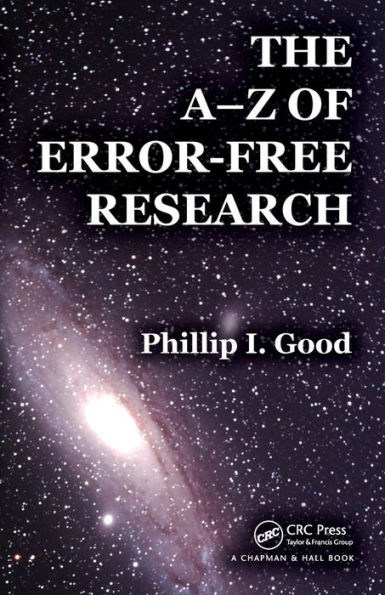A Practical Guide with Step-by-Step Explanations, Numerous Worked Examples, and R Code
The A–Z of Error-Free Research describes the design, analysis, modeling, and reporting of experiments, clinical trials, and surveys. The book shows you when to use statistics, the best ways to cope with variation, and how to design an experiment, determine optimal sample size, and collect useable data. It also helps you choose the best statistical procedures for your application and takes you step by step through model development and reporting results for publication.
Transition from Student to Researcher
Helping you become a confident researcher, the book begins with an overview of when—and when not—to use statistics. It guides you through the planning and data collection phases and presents various data analysis techniques, including methods for sample size determination. The author then covers techniques for developing models that provide a basis for future research. He also discusses reporting techniques to ensure your research efforts get the proper credit. The book concludes with case-control and cohort studies.
A Practical Guide with Step-by-Step Explanations, Numerous Worked Examples, and R Code
The A–Z of Error-Free Research describes the design, analysis, modeling, and reporting of experiments, clinical trials, and surveys. The book shows you when to use statistics, the best ways to cope with variation, and how to design an experiment, determine optimal sample size, and collect useable data. It also helps you choose the best statistical procedures for your application and takes you step by step through model development and reporting results for publication.
Transition from Student to Researcher
Helping you become a confident researcher, the book begins with an overview of when—and when not—to use statistics. It guides you through the planning and data collection phases and presents various data analysis techniques, including methods for sample size determination. The author then covers techniques for developing models that provide a basis for future research. He also discusses reporting techniques to ensure your research efforts get the proper credit. The book concludes with case-control and cohort studies.

The A-Z of Error-Free Research
269
The A-Z of Error-Free Research
269Paperback

Product Details
| ISBN-13: | 9781439897379 |
|---|---|
| Publisher: | Taylor & Francis |
| Publication date: | 08/01/2012 |
| Pages: | 269 |
| Product dimensions: | 5.40(w) x 8.40(h) x 0.70(d) |
